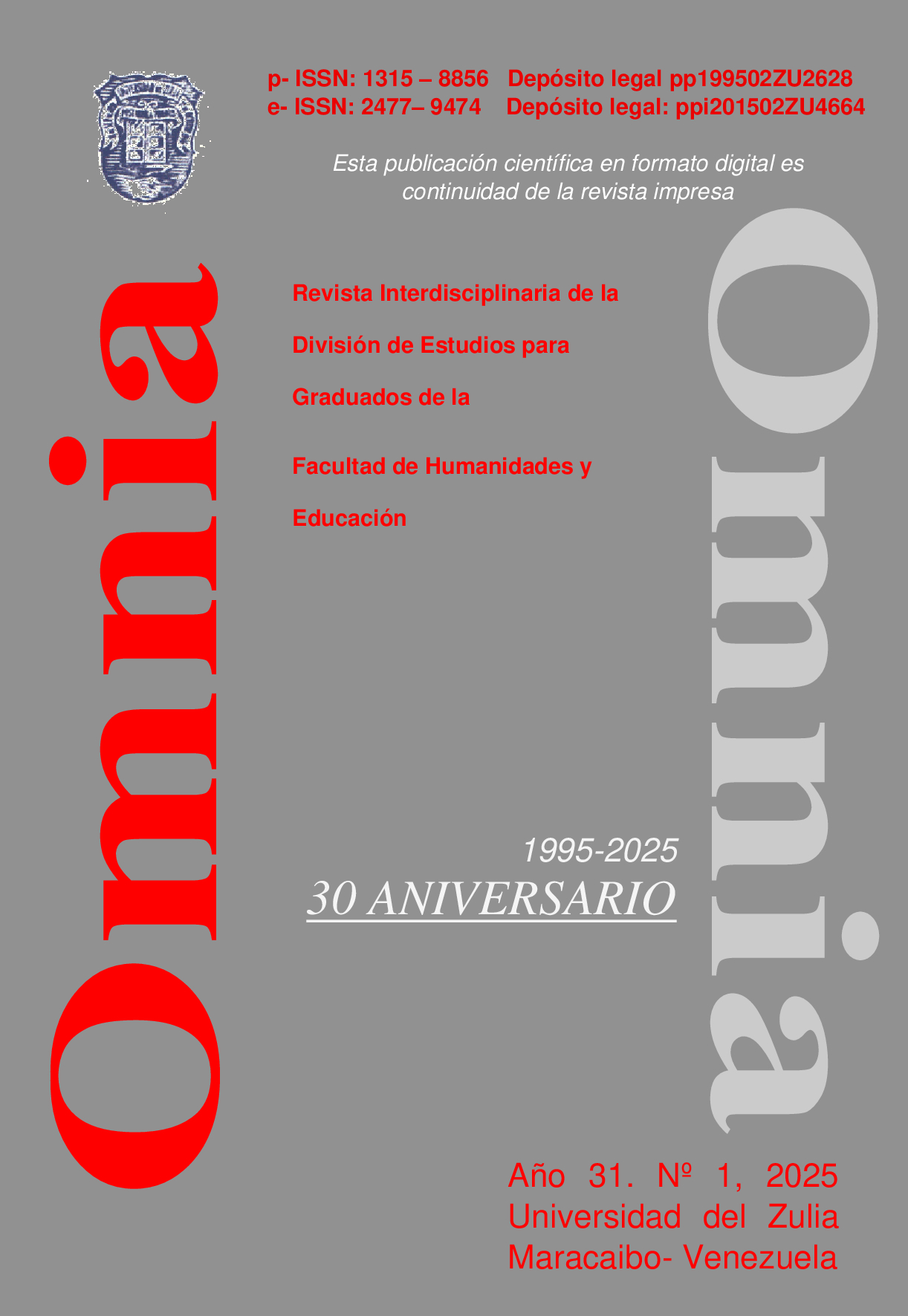Teoría semiótica aplicada al análisis del film Drácula (1992)
Resumen
El objetivo de la investigación consistió en analizar el film Drácula (1992), adaptación llevada a la pantalla `por Francis Ford Coppola atendiendo a los preceptos de la teoría semiótica de Manuel González de Ávila. Los fundamentos teóricos se sustentaron en González de Ávila (2003), Van Dijk (1978), Beaugrade y Dressler (1996), Villasmil, Arrieta y Finol (2009), en cuanto a los siguientes criterios: 1.- Noción de textualidad según la Semiótica Aislante, 2.- Normas de Textualidad, 3.- El texto estudiado dentro y fuera del mundo, 4.- Nociones de Semiótica Crítica aplicadas al cine. El tipo de investigación fue de carácter cualitativo, puesto que se realizaron descripciones y anotaciones, acera de las escenas más resaltantes de la película. Por consiguiente, esta investigación está dividida en dos fases: la primera referida a la construcción de la teoría aplicada al discurso cinematográfico y la segunda a la selección de escenas en donde se evidenció los criterios de la Semiótica, Aislante, Vinculante y Critica. Los hallazgos encontrados en el análisis de mostraron que los criterios que maneja la Semiótica Aislante se reflejaron en algunas escenas entre estos criterios se mencionan la intertextualidad, la coherencia y la cohesión. Se concluye que el constructo teórico de Manuel González de Ávila puede ser aplicado y adaptado a cualquier tipo de discurso.
Descargas
Citas
Franco, Antonio (2007). Gramática comunicativa. Colección textos universitarios Ediciones del Vice Rectorado Académico. Universidad del Zulia. Primera edición. Editorial Venezolana C.A; Mérida, Venezuela
Beaugrande Robert y Dressler Wolfgang (1996). Introducción a la lingüística del texto. Ariel: Barcelona.
Freud, Sigmund (1986). Introducción al Psicoanálisis. Alianza: Madrid
González de Ávila, Manuel (2002). Semiótica Crítica y Crítica de la Cultura. Barcelona: Anthropodos. .
Greimas, Algirdas Julien (1993). Semiótica Estructural. Gredos: Madrid
Jung, Carl (1995). El hombre y sus símbolos. Barcelona_ Paidós
Van Dijj, Teun (1978). La Ciencia del Texto. Ariel: Madrid
Villasmil Yeriling, Arrieta, Beatriz y Finol, José (2009). Análisis Semio linüístico del discurso cinematográfico. Caso: Drácula de Bram Stoker, Revista da área de Humanas. Vol. 56.
Villasmil, Yeriling y Fuenmayor, Gloria (2012). La Semiótica Aislante y Vinculante en la didáctica de la Lengua. Revista Académica. Vol 5, Nro 7.
___________ (2011). Modelo semio lingüístico para la didáctica de la escritura. Ponencia presentada en las V Jornadas de Investigación de la Universidad Dr. José Gregorio Hernández. Maracaibo-Venezuela.





